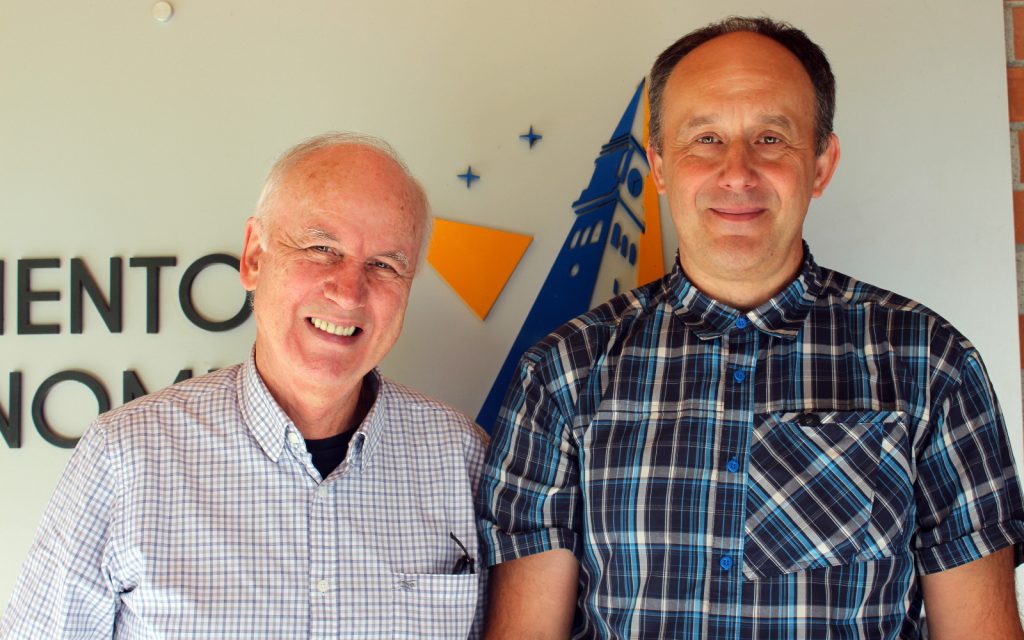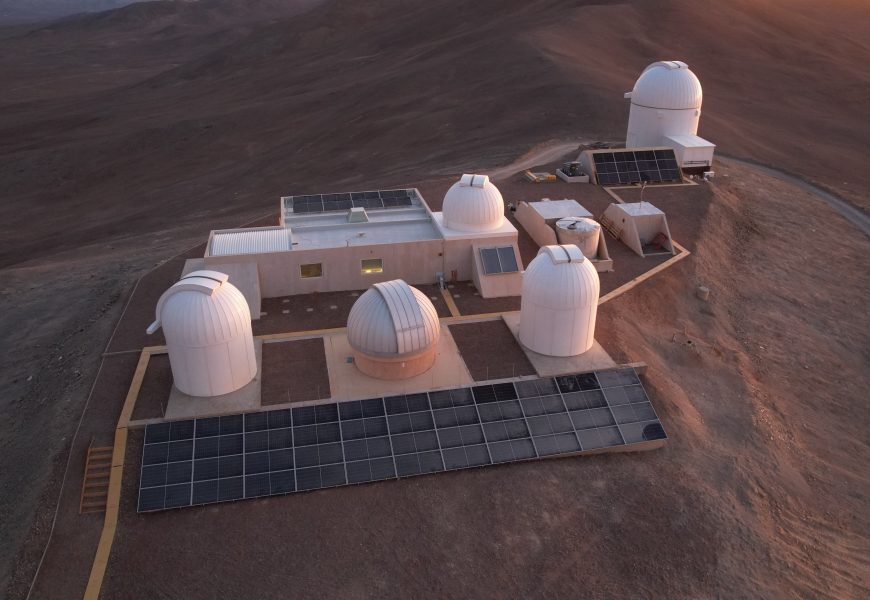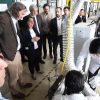By: Marllory Fuentes Salazar and Franco López Flores / departamento.astronomia@gmail.com | Photographs: Courtesy of Communications and Outreach, UdeC Department of Astronomy
The Araucaria Project, led by researchers from UdeC’s Astronomy Department, Dr. Wolfgang Gieren and Dr. Grzegorz Pietrzynski, has taken a new step in its cutting-edge science work, which will significantly boost its study, seeking to maximize the measurements that can be made from Earth to other celestial bodies such as galaxies and stars, among other aspects.
November 28th saw the inauguration of the “Cerro Murphy Astronomical Observatory (OCM)” on its namesake hill at an altitude of 2,800 meters above sea level in the Antofagasta region. Although the facilities are still under construction, there are already four fully operational telescopes.
Three of these were purchased with funds obtained from the Polish Ministry of Sciences, thanks to the efforts of Dr. Pietrzynski. The main instrument will be a 2.5-meter aperture telescope, which will be financed by the European Research Council (ERC) through a Synergy Project won by these two researchers in 2020.

Observations that could shake the international community
As explained by UdeC’s professor, these instruments are used to perform spectroscopic and photometric observations (light measurements) in the infrared and optical spectrum, which are needed to meet the objectives of the Araucaria Group for the ERC.
“Along with observing different types of pulsating stars and eclipsing binary stars in the Milky Way and other nearby galaxies, Active Galactic Nuclei (AGNs) will be observed, located at enormous distances, billions of light-years from Earth,” explained Dr. Wolfgang Gieren.
This aims to improve the accuracy of measurements about the distances to galaxies, “determining with exquisite precision the Hubble constant and its possible variation during the cosmic time.”
“In addition, these telescopes are very useful for understanding a myriad of astrophysical problems. Through these investigations, we could better understand the nature of the so-called ‘dark energy,’ which represents 70% of the Universe’s matter/energy, and possibly lead to modifications of the standard cosmological model, accepted by most astronomers,” concluded Professor Gieren.
The official opening was held at the Nicolaus Copernicus Center of the Polish Academy of Sciences in Warsaw. The Observatory is located near Cerro Armazones (Armazones Hill), where the European Southern Observatory (ESO) is building the Extremely Large Telescope (ELT).
In fact, the CMO is located on land owned by ESO. Once its construction is completed, it will offer, as with other international observatories, the 10% of observation required by law for exclusive use by the Chilean astronomical community. However, the team behind the Cerro Murphy Observatory is open to receiving suggestions for scientific collaborations from those interested in using their state-of-the-art telescopes.
Last modified: 27 de septiembre de 2024






